Table of Contents
Introduction
Animal nutrition plays a vital role in the health, production, and longevity of livestock, especially for cattle farming. Proper feeding directly influences the growth rate, milk production, reproductive capacity, and disease resistance of cows and other farm animals.
Understanding animal nutrition basics enables farmers to prepare cattle diets that meet the cattle’s unique requirements for maximum utilization of resources and least wastage.
High-quality cattle feed cannot be overstressed in the current competitive livestock industry because it provides important nutrients that sustain life, promote growth, and optimize overall productivity.
Roughages, concentrates, and minerals and vitamins make up cattle diets on which good animal nutrition is founded. Farmers, by choosing and blending appropriately such diet constituents, can supply cows with required nutrients, which have direct implications on milk yield, weight gain, and overall well-being.
Moreover, in-shop experience on cow feeds compositions can render cost-efficiency free of any compromise on animal performance.
This blog will provide seven winning techniques for enhancing animal nutrition, using practical advice and facts that can be used by farmers, students, and animal lovers to enhance livestock breeding practices.
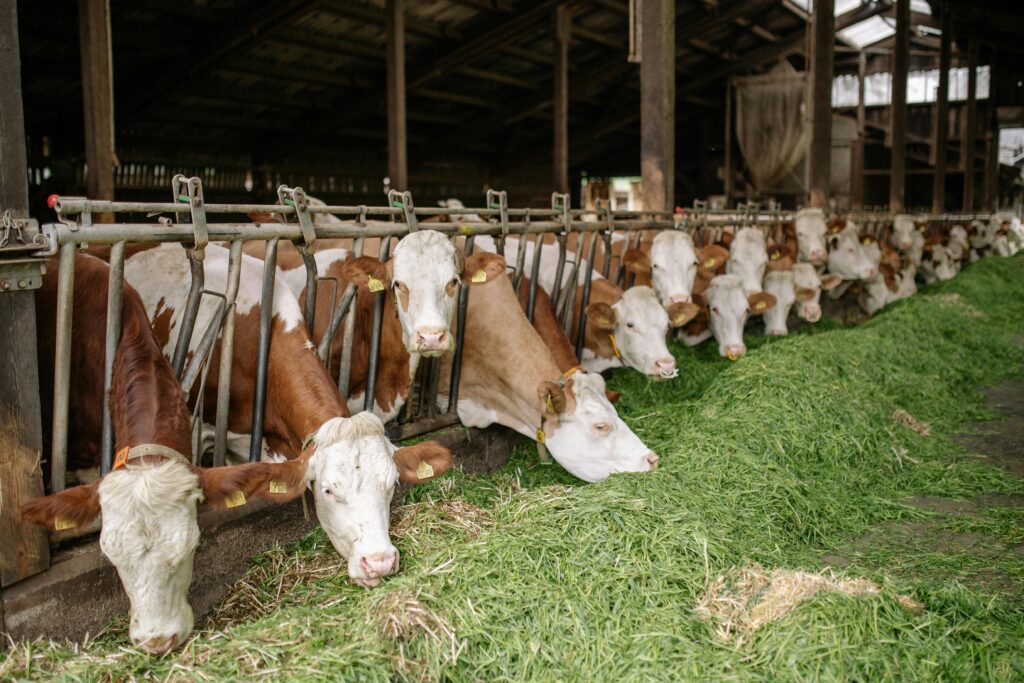
From the achievement of feed compositions to embracing climate-resilient feeding strategies, these techniques seek to illustrate a holistic approach to cattle performance and welfare.
Benefits of Animal Nutrition
Optimal animal nutrition has several benefits that directly affect the productivity, health, and profitability of cow farms. Farmers can optimize cattle diet and cow diet by acquiring and implementing the knowledge of animal nutrition. The following are the principal benefits, explained in detail.
Increased Milk Yield
One of the most palpable benefits of optimal animal nutrition is increased milk yield by dairy cows. Well-formulated feed for cattle with a well-balanced level of protein, carbohydrate, fat, vitamin, and minerals is the source of energy for lactation in cows.
One good example is well-quality cow feed containing the correct level of crude protein to boost the quantity of milk as well as its quality. Farmers always observe that cattle fed on properly formulated diet produce milk with more protein and fat content that attracts a better market price.
In addition, proper feeding reduces metabolic disorders as well as mastitis that are undesirable to the quality and quantity of milk.
Optimum Development and Weight Gain
Animal nutrition plays a critical role in achieving maximum growth in cattle. Nutrient-dense cattle feed is required by calves to ensure maximum bone growth, muscle development, and health.
Feeding with high-energy grains, protein supplements, and trace minerals induces ongoing gain in weight, which has a crucial role in beef cattle’s meat production. For instance, feeding strategies fortified with concentrates and roughage economically maintains digestive health and the weight of calves.
Farmers who are interested in nutritious diet highlight quicker growth, enhanced animal well-being, and reduced mortality, hence increasing profitability on their farms.
Better Immunity and Disease Resistance
A healthy cow is less susceptible to infection, disease, and stress. Animal feeding provides basic vitamins and minerals which boost the immunity of cows such that they are less vulnerable to environmental stress.
For example, there is cattle feed that includes vitamins A, D, and E, and trace minerals like zinc and selenium, that boost immunity and quicker recovery from diseases.
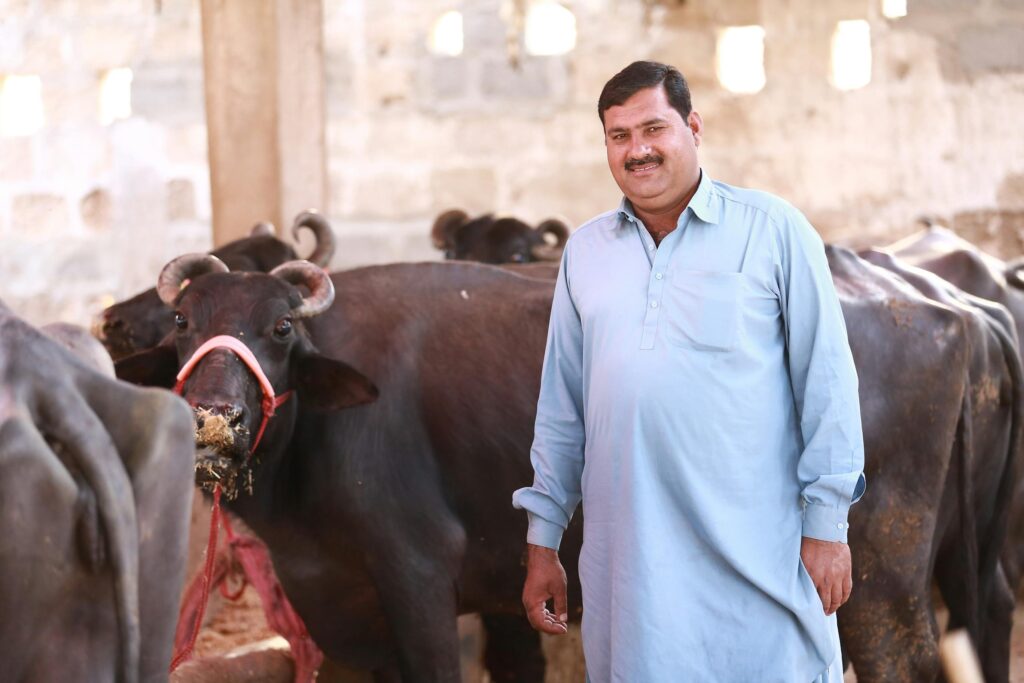
Successful cow feeding also prevents widespread nutritional deficiencies, which induce suboptimal immunity, reduced fertility, and compromised growth. Investment in animal nutrition guarantees the farmer with healthy cows, reducing veterinary costs and farm efficiency in general.
Improved Reproductive Performance
Nutrition influences reproduction directly in cows. Proper cattle ration ensures that cows mature sexually at the appropriate time, exhibit normal estrous cycles, and enjoy fewer reproductive issues. Key nutrients such as protein, energy, and trace minerals play crucial roles in fertility, conception, and calving.
Deficiency of phosphorus and calcium, for example, can lead to poor reproductive performance, while high-grade animal nutrition records maximum breeding.
By giving priority to effective cow fodder, agriculturalists can improve the reproductive efficiency of the cattle herds, leading to timely calving intervals and adequate quality livestock supplies.
Economic Efficiency
Investing in feeds for animals is also economically viable. Quality cow feeds reduce wastage, decrease feeds cost per unit animal produced, and increase return per animal.
Proper feeding systems allow cows to become heavier and give more milk earlier with less illness, all of which decrease the cost of operation and maximize return.
Besides, information regarding cattle nutrition helps farmers choose cost-efficient alternatives such as utilizing accessible feeding resources as that available locally and creating well-balanced cow feed without sacrificing quality.
Generally, better animal nutrition results in productive, profitable, and sustainable livestock production.
Directions of Maximum Animal Nutrition
Animal nutrition optimization is an example of planning, tracking, and controlling cattle diets. The proper means are made sure to provide cows with the required nutrients while maximizing productivity as well as health. Seven effective ways of improving animal nutrition are discussed below.
1. Balanced Formulation of Feed
Good animal nutrition depends on creating a balanced feed formulation. Cow fodder should include the right proportions of protein, carbohydrates, fats, vitamins, and minerals to meet the specific requirements of cows at different stages of life.
The energy and protein requirements of lactating cows, for example, are higher than those of dry cows and calf-raising calves. Dairy farmers can mix cow feed by reviewing ingredients such as maize, soybean meal, and forage to enable proper growth, milk production, and health in cows.
Systematic quality checking of feeds and nutrients avoids deficiencies, maintaining animal nutrition in effective working and possible conditions.
2. Utilization of High-Quality Forages
Green fodder, silage, and hay are salient ingredients in cattle feed that add fiber to digestive health. Good-quality forages enhance rumen health, utilization of nutrients, and feed quality. Legume hay such as alfalfa contains a lot of protein and minerals and is excellent for milking dairy cows.
Inclusion of different forage into the diet of a cow gives diet to animals and also stimulates proper digestion. This practice not only enhances rate and degree of growth as well as milk yield but also reduces the incidence of gastrointestinal diseases otherwise caused by low-fiber diets.
3. The Use of Concentrate and Supplement
Grain and protein feeds are concentrates needed to elevate energy consumption in cows, especially during peak growth or production. Supplements such as vitamin premix and mineral mix are utilized in adding performance, reproduction, and immunity.
For example, adding calcium and phosphorus to cattle feed avoids metabolic diseases like milk fever and strengthens calf skeletons.
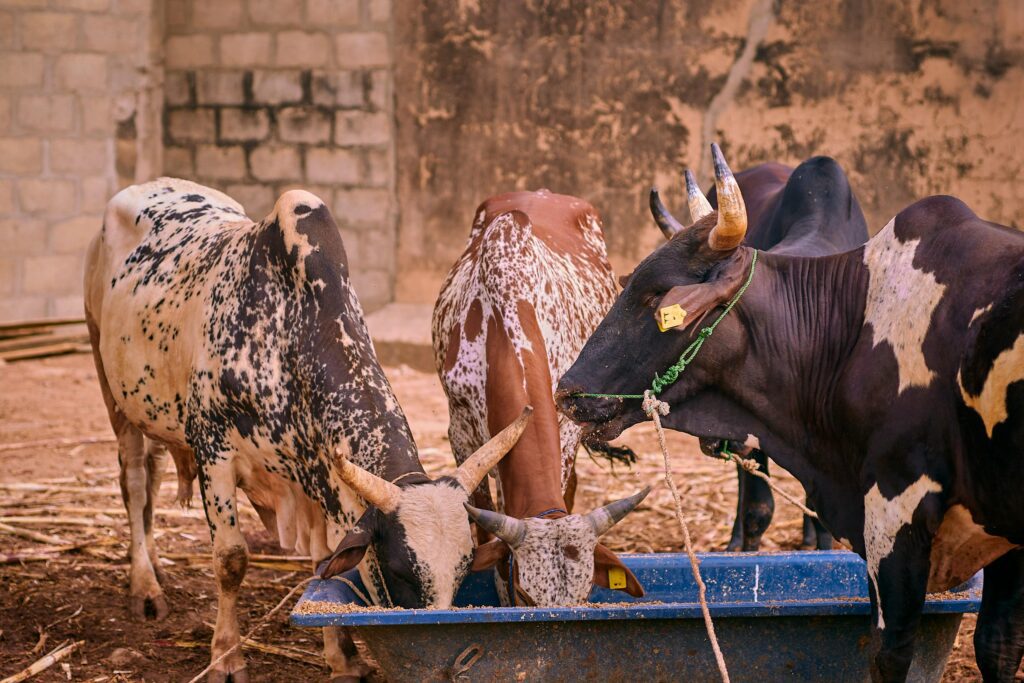
By having an equal balance of concentrates and supplements with forages, farmers can create a nutrient-dense cow feed that optimizes animal nutrition without indigestion or overfeeding.
4. Feed Intake and Performance Monitoring
Animal nutrition is not just a question of feeding quality—animals’ intake and reaction must also be monitored. Constant observation of feed intake, body condition score, and milk yield allows the farmer to adjust cattle food when the need arises.
For example, reduced feed intake is associated with unpalatability, dietary imbalance, or disease. Observation of the growth rates and production factors helps to provide assurance that cow food brings desired consequences, and optimal animal nutrition can be readily maintained throughout the herd.
5. Planned Feeding Programs
Feeding programs that are planned significantly contribute to efficiency in nutrient utilization and overall animal performance. Dividing cattle feed into multiple small meals every day will ensure improved digestion and prevention of metabolic disorders.
An example is dairy cows, which are preferred by frequent feeding in that it provides a steady energy and nutrient supply to sustain milk production. Calves too perform well on restricted portions of high-calorie cow feeds for regular growth.
Farmers make sure that nutritional well-being in animals is maximized and stress and gastrointestinal problems are reduced by embracing smart feeding habits.
6. Feed Additives and Probiotics
Feed additives and probiotics serve a crucial role in maximizing animal nutrition through improved digestion, nutrient efficiency, and general health. Probiotics such as Lactobacillus and yeast cultures increase the function of the rumen and avert digestive disease.
Additives such as enzymes break down complex nutrients, freeing them for use in the animal. They are added to the animal feed to allow farmers to advance growth, facilitate feed conversion, and advance immunity.
The new feeding of cattle makes animal nutrition adequately balanced but optimized to deliver maximum productivity.
7. Local and Sustainable Feed Resources
Sustainability has become a new imperative in animal feeding. Making use of locally available feedstuffs such as crop residues, fodder, and agro-industrial by-products keeps costs without compromising nutritional contents.
Rice bran, wheat straw, and maize cobs are just a few of the feedstuffs, for example, that can be harnessed in cattle feed following proper processing. Sustainable feeding also lowers the environmental footprint, facilitates profitability on the farm, and provides consistent availability of high-quality feed for cows.
Farmers utilizing local and sustainable sources of feed enhance animal quality diet as well as ecological harmony.
Challenges in Animal Nutrition
Even with the best efforts one can make, the manufacturers typically encounter a few setbacks in offering perfect animal nutrition. It is necessary to learn about these issues in order to embrace practical recommendations and offer high-quality cow feed and cattle feed.
The below are the primary issues encountered in animal feeding routines.
1. Nutritional Imbalance
Most common issue in animal nutrition is nutritional imbalance. The majority of the farmers employ ordinary feeding systems or single-source feeds, which are perhaps not sufficient to meet all the nutrients in a balanced rate.
For example, sole feeding on roughages without adequate amounts of proteins, minerals, and vitamins will cause stunted growth, reduction in milk, and fertility issues.
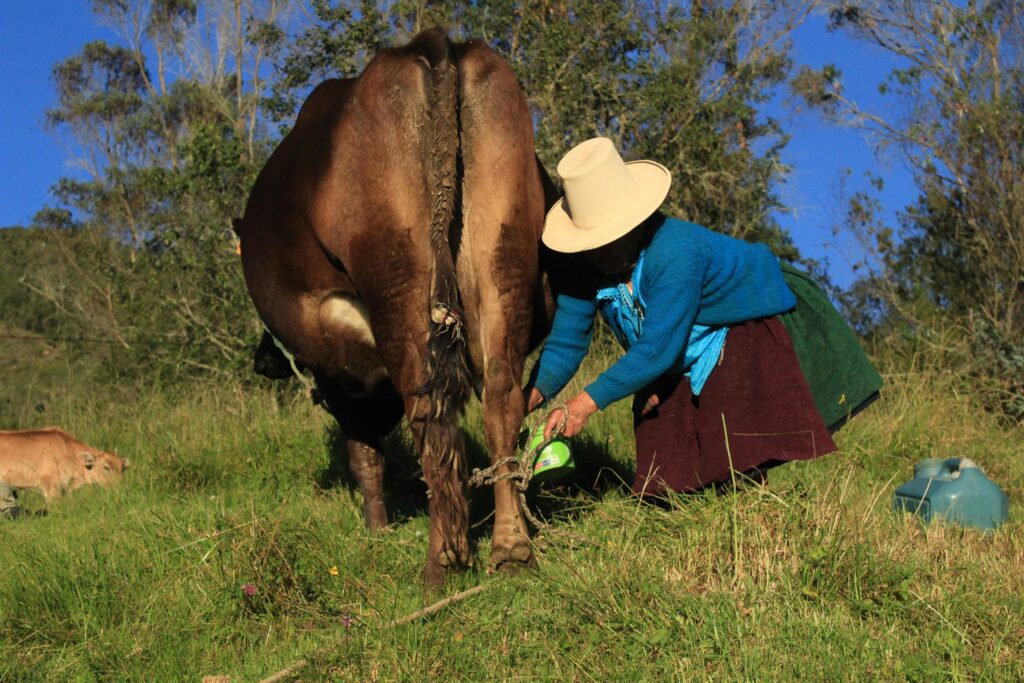
Similarly, improper cow feed mixtures may cause insufficient calcium or phosphorus, giving rise to metabolic disorders and weakened immune system. This is an area that has to be catered to by meticulous planning and preparation of cattle feeds to meet the whole spectrum of nutritional needs.
2. Seasonal Deficiencies in Feeds
Seasonal changes in feeds are likely to break normal animal nutrition. There is no green fodder during dry spells or droughts, and the farmer uses poor-quality crop residues or purchased feeds. Such replacements lack essential nutrients and therefore influence growth, milk yield, and herd health.
For instance, the cows will lose weight or produce less milk as a result of the energy shortage. Correct storage, silage making, and judicious use of alternative cow feed sources can reverse the effect of season-related deficiencies.
3. Poor Quality Feed
Feed quality is possibly the most crucial factor in animal nutrition. Mildewed, spoiled, or improperly stored, feed will ruin digestive health, reduce nutrient consumption, and even lead to disease.
Low-quality cow feed is sometimes readily available but not adequate in quality to deliver the necessary nutrition to the animals and leads to suboptimal performance.
Ongoing harvesting, drying, and storing, as well as intermittent quality checks, must be done to maintain feed consistency of quality and enable optimal animal nutrition.
4. Lack of Proper Feed Formulation Knowledge
In addition, most farmers are also subjected to the lack of proper knowledge on how to formulate appropriate feed. Formulating an optimally balanced cattle feed involves knowledge of nutritional requirements, feed ingredients, and digestion processes.
Without this, farmers would tend to overfeed some of the feed components and omit others, and poor animal performance and loss of resources will ensue.
Farmers can be empowered by training, extension services, and readily accessible guidelines to design effective cow feeding strategies that will enhance animal nutrition and productivity.
5. Economic Restraints
Financial limitations rarely enable farmers to provide ideal cow diet and cattle diet. Ingredients for diet, additives, and supplements are expensive, and farmers compromise on diet. Malnutrition affects growth, milk production, and animal welfare, reducing long-term profitability.
Budget-friendly alternatives, such as the use of locally available diet material, crop residues, and cost-effective diet management, can bridge financial limitations and provide proper animal nutrition.
6. Disease and Management of Health
Animal health and animal nutrition are interchangeable terms. Disease, infection, or parasites can interfere with feed intake and nutrient utilization, which is the reverse of nutritional content of even good cattle feed.
Nutrition, on the contrary, can undermine immunity, and cows are prone to diseases easily. Farmers need to adopt integrated herd health management like immunization, deworming, and periodic veterinary care, coupled with optimal cow feeding practice to achieve whole animal nutrition.
7. Environmental and Climate Factors
Environmental conditions, such as temperature, water, and humidity, influence cattle feed intake and nutrient metabolism. Heat stress reduces appetite and milk yield, while excessive rain can destroy conserved fodder.
Climatic uncertainty poses challenges to regular animal feeding, and adaptive feeding schemes are needed. For example, energy-enriched diet for cows supplementation on hot days or covered storage solutions to roughages can aid nutrient intake and herd performance.
Solutions to Optimal Animal Nutrition
Solution to animal nutrition problems is preceded by the incorporation of quality planning, competence, and progressive feeding systems. Functioning of these solutions guarantees cattle meal and cow meal constantly providing quality feed to livestock, preserving health, productivity, and farm profitability.
1. Prepare Balanced Diets
To address nutritional imbalance, the farmers must pay attention to preparing optimally balanced diets that precisely meet the needs of cows at different stages of life. This includes the highest energy, protein, fiber, vitamins, and minerals.
Feed tables, ration computers, and the skill of specialists can be utilized to develop nutrient-rich cattle feed. For instance, milk cows require more energy and protein than dry cows, and calves require protein for development.
With correct formulation of cow diet, farmers can prevent deficiency, growth rates, and increase milk production, hence providing maximum animal nutrition.
2. Preserve and Store Feed Effectively
Seasonal feed scarcity can be avoided by utilizing appropriate preservation and storage techniques. Silage, hay, or fodder heap production in event of having surplus green forage is a year-round supply of quality feed.
Putting the feed into sealed silos or ventilated warehouse houses prevents wastage and loss of nutrients. For example, storage of alfalfa hay under dry, shaded conditions preserves protein content and palatability.
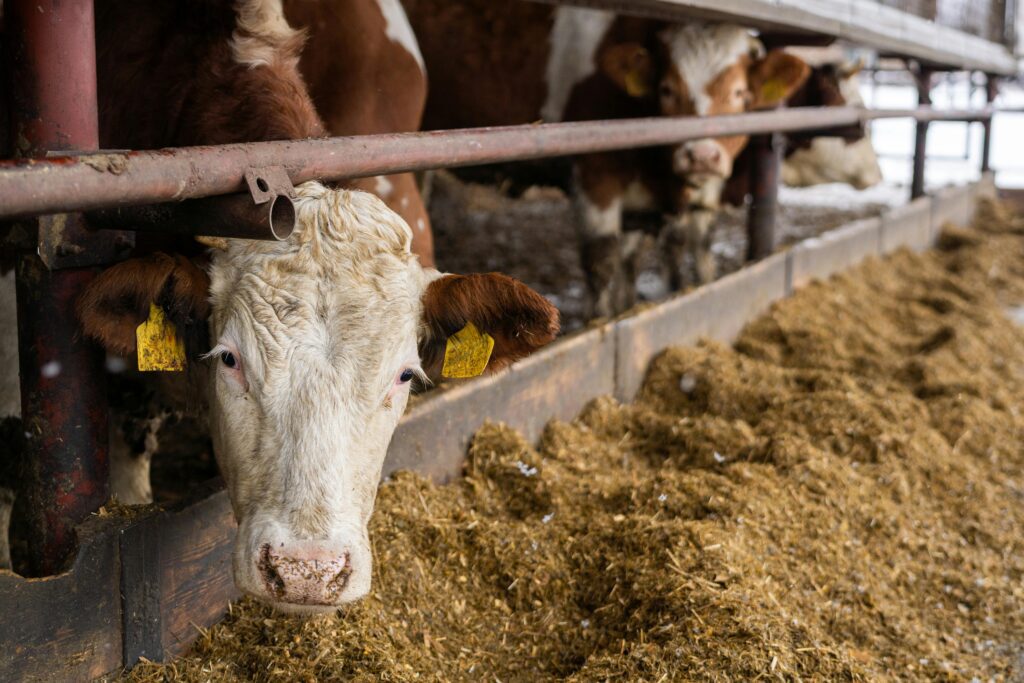
Correct storage of the feed allows dairy farmers to provide frequent cow feed, thus ensured consistent milk yield, growth, and overall herd health.
3. Regular Feed Quality Monitoring
There should be quality feed ensured in order to attain successful animal nutrition. Cattle feed is regularly tested for moisture content, protein make-up, fiber, and contaminants to provide the animal with the desired nutrition.
They manually and by laboratory testing examine for mold, toxins, or shortfalls prior to offering the feed. Producers are also able to monitor cattle feed palatability and freshness and adjust rations accordingly.
Having consistently high-grade feed eliminates health risks, encourages digestion, and improves nutrient uptake, resulting in more effective and consistent animal nourishment.
4. Train Farmers on Feed Formula
Improving feed formula ability and expertise is a sustainable way to promote animal nutrition. Farmers are empowered through extension education, training, and access to reliable information to produce quality cattle feed from locally available material.
For instance, information on the protein, fiber, and energy composition of material available for feeding informs optimal cow feed rations formulation. Trained farmers can reduce wastage, prevent nutritional deficiencies, and maximize their livestock productivity.
Continuing learning also allows the farmer to adapt to new feeding technologies and herding management practices.
5. Optimize Feed Expenditure Without Sacrificing Nutrition
Economic constraints can be overcome by the use of cost-effective feeding practices that never sacrifice nutrition. Farmers can include locally available feeding materials, crop residues, and agro-industrial by-products in cow rations.
For example, wheat bran, rice straw, and maize cobs can be mixed with protein supplements to formulate balanced rations. Feed additives, concentrates, and bulk purchases during critical periods reduce costs.
Efficient feed costs keep animals well-nourished while increasing farm profitability and overall sustainability.
6. Use Health Management Practices
Animal well-being is central to proper nutrition.
Prevention of sickness, parasite control, and immunization are all major components of cow health in the sense that they can extract nutrients from the feed. Deworming programs, for example, improve digestion and nutrient absorption, while vaccines reduce loss of energy due to infection with disease.
Healthy cows feed cattle feed well, without loss, transform nutrients into growth or milk, and gain effective immunity. Integration of cow feed diet nutrition and herd health management offers a total animal diet program.
7. Adjustment to Environmental and Climate Conditions
Farmers can mitigate the influence of climate and environmental conditions through adjustments in feeding. In heat stress, supply of high-energy cow ration, water, and shelter feeding maintains appetite and lactation.
In prolonged rain, preservation of food from water and under cover during storage of roughages maintains food quality. Seasonal planning of feeding and composition maintains stability in animal nutrition, which maintains growth, reproduction, and productivity in spite of external factors.
FAQs on Animal Nutrition
1. Why is animal nutrition significant in cattle rearing?
Animal nutrition is also critical in providing the health, productivity, and fertility of cattle. Cattle feeding rations provide cows with nutrients that enable milk yield, weight gain, and disease resistance.
Managing cow feed properly reduces the incidence of nutritional disease and deficiency, ultimately resulting in farm profitability.
2. How do I improve cattle feed quality?
The quality improvement of cattle feed involves the utilization of high-grade feeds, storage, and checking for the amount of nutrients. Concentrates, supplements, and forages are blended in cow feed in order to provide balanced food.
Checking and adjustment based on the nutritional needs of the herd prevent the inability to effectively provide year-round animal nourishment.
3. What are the most prevalent problems in cow feeds?
The farmer is often faced with the following challenges: nutritional imbalance, seasonality of feed, poor-grade feeds, and ignorance of feed composition. Financial limitations and climatic conditions may not promise availability of quality cattle feeds.
Surviving such setbacks requires adequate planning, sustainable inputs, and regular monitoring of animal nutrition.
4. Are locally available feed resources sufficient to meet the nutritional requirement of cows?
Yes, local feeds like crop residues, fodder, and agro-industrial by-products can be used very effectively in cow feeding. If well mixed and supplemented, these feeds complement each other in offering balanced rations that are ideal to growth, milk productions, and overall health.
This trend also reduces feeding expenses without sacrificing optimum animal nutrition.
5. How does good animal nutrition impact milk production?
Healthy cattle feed has a direct impact on milk volume and quality. Proper feeding of cattle provides the energy, protein, vitamins, and minerals necessary for milk production. Healthy cows that are given healthy cow feed yield more milk with better fat and protein quality.
Nutrition also guards cattle against metabolic disorders, enabling stable and continuous milk production.
Conclusion
Animal nutrition forms the core of profitable cattle farming and has a direct bearing on growth, lactation, breeding, and herd health. By taking note of proper feeding practices and proper management of cattle feed, farmers can give their cows all the nutrient they need in order to function at optimal levels.
Carefully formulated cow diets, coupled with effectively designed diets, supplements, and sustainable feeding, boost immunity, improve productivity, and reduce risk of disease and metabolic disorders.
The seven strategies outlined in this blog—structuring a balanced feed, supplementing high-quality forages, use of concentrates and supplements, managing feed intake, planning feeding strategically, use of feed additives and probiotics, and using sustainable local resources—provide true, realistic methods for maximizing animal nutrition.
Implementation of these methods not only contributes to the animals’ health but also improves the farm’s efficiency and profitability, hence making livestock production sustainable in the long term.
Farmers, students, and cattlemen are encouraged to implement these methods, closely observe how their herds perform, and modify formulas for cattle feed according to the special requirements of their cows.
Incorporation of best practices in animal nutrition will yield healthier and more productive animals, which will assure economic stability and also animal welfare. Spending money and time today to provide them with proper nutrition will reap significant rewards for the herd and farm in the long run.
